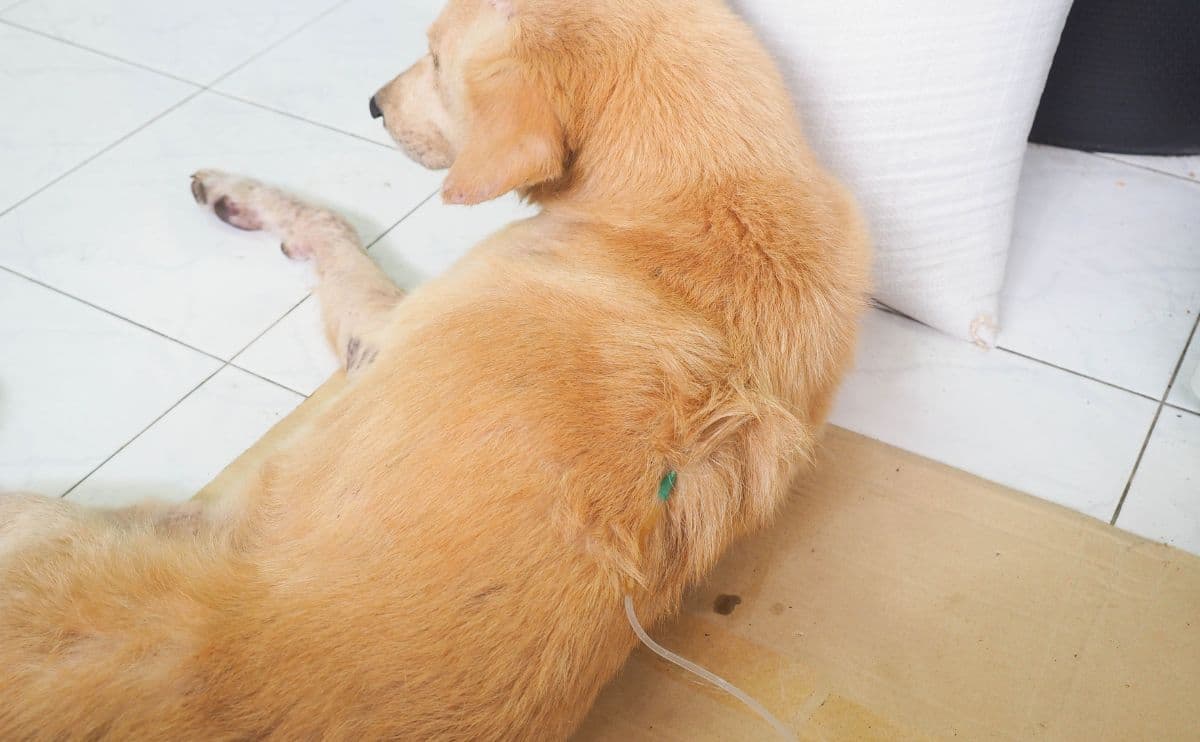When you purchase through links on our site, we may earn a commission. Here’s how it works.
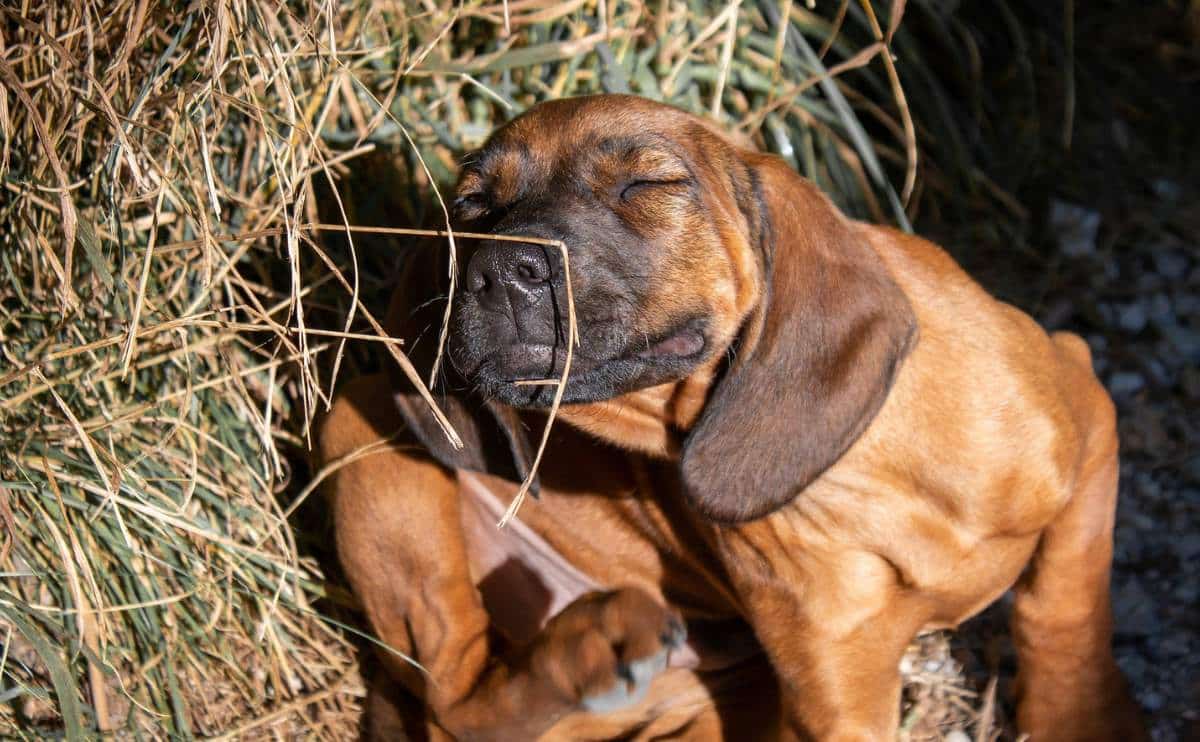
Lice are an uncomfortable experience for humans, but did you know they can affect dogs, too? Unfortunately, dogs can have issues with lice. You need to know the signs and symptoms and how to prevent and treat dog lice to keep your furry friend safe and healthy.
What Are Dog Lice?
Dog lice are insects that can live in dog hair. There are two types of dog lice: chewing lice and biting lice.
Chewing Lice
Chewing lice (plural,Trichodectes canis and Heterodoxus spiniger), singularly called chewing louse, live off of the dog’s skin debris and sebaceous secretions.
Biting & Sucking Lice
Biting lice (Linognathus setosus) rely on a dog’s blood to survive. Some species of biting lice are sucking lice (Siphunculata). The sucking lice pierce the skin, the suck out the blood. They grip onto the hair shaft and can infest almost any mammal species.
The Life Cycle Of A Louse
Dog lice live their entire life cycle on their host. There are three stages in the life cycle of a louse: nit, nymph, and adult.
- Nit: They start as eggs, aka nits, which glue to the dog’s hair when laid.
- Nymph: When they hatch, they’re called nymphs. They look just like adult lice but are smaller.
- Adult: They grow into adults in about a week and live a total life span of 2 to 4 weeks. Females lay eggs their entire life to keep the cycle going.
Human Lice vs. Dog Lice
Can dogs get lice from humans? Lice are species-specific. That means that human lice live on humans and need human blood, skin, and debris to live. Dog lice live on dogs and need dog blood, skin, and debris to survive. This means you can’t give lice to your dog and vice versa. Your cat is also safe since dogs can’t give lice to cats either.
One way that human lice and dog lice are similar is in the mode of infestation. People and dogs are more likely to get lice when they’re around lots of others. For dogs, this means at dog parks, kennels, classes, play dates, and any group activities. Lice can’t fly, so direct contact with an infected dog is the only way to get it.
What Does Dog Lice Look Like?
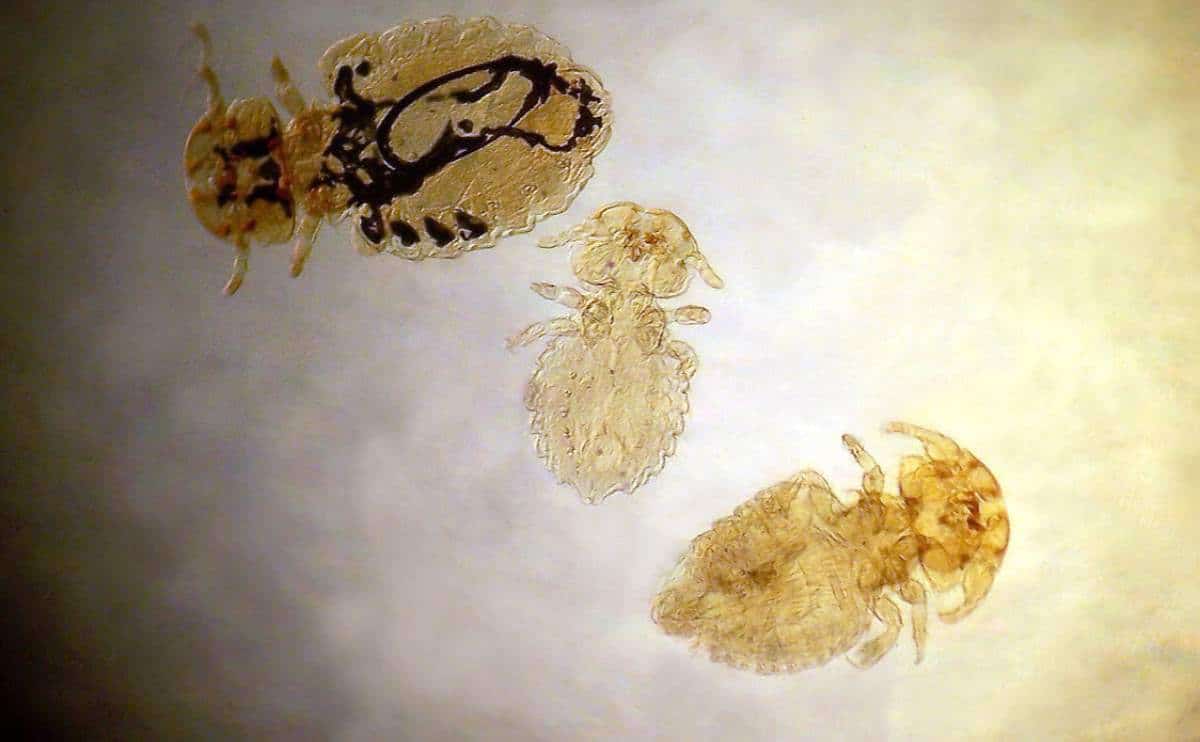
Dog lice are insects with flat bodies and six legs. Each leg has a claw-like hook that helps them adhere to the hair. Adult lice are around 3 millimeters long, which is big enough to see with the naked eye.
Nymphs are more challenging to see because they’re smaller than adults but look the same. Nits look a lot like dandruff: tiny white specks on the hair. However, nits stick to the hair, whereas dandruff shakes off easily.
If you’re concerned you won’t be able to tell if your dog has lice or fleas, rest assured it’s easy to tell the difference. Lice are browner in color compared to black fleas, and lice move very slowly compared to scurrying fleas. Learn more in our article about flea collars.
What Are The Symptoms?
Here’s a list of things to look for if you suspect your dog has lice.
- Lice in hair
- Nits in hair
- Itchiness
- Scratching
- Matted coat
- Rough, dry skin patches
- Small wounds
- Red, infected skin patches
- Hair loss
How Do You Treat Lice Infestations?
It’s unlikely that your dog will get lice if you’re using a monthly flea and tick preventive treatment.
However, if your dog gets lice, treatment involves three steps:
- Killing the lice
- Removing the lice and eggs
- Cleaning your home
Left untreated, lice can cause an infestation, which can cause more severe health issues like anemia or additional parasites. You’ll need to repeat the treatment regularly for a month or more and treat all dogs in the home to ensure lice infestations are fully gone.
In severe cases, your dog may have skin damage from scratching. It’s essential to take your dog to the vet if they end up with a scratch wound or bacterial infection since antibiotics might be necessary.
1. Kill The Lice
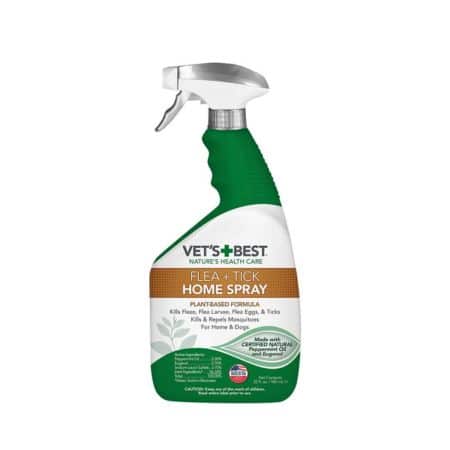
To kill the lice, you may want to consider using an insecticide. Commonly used insecticides like fipronil, imidacloprid, and selamectin can all be effective. Several products you can buy, like Vet’s Best Flea & Tick Home Spray and Advantage Spray, contain insecticides.
You don’t want to harm your dog, and some typical insecticides are incredibly harmful to cats and other small pets that you may have in your home. That’s why contacting your vet about what they think is best is vital. Also, insecticides will not kill the lice eggs.
If you’re looking for a home remedy for getting rid of lice, you can consider a homemade flea and tick preventative treatment. It may help kill some of the lice and prevent them in the future. Again, check with your vet before you begin any treatment.
2. Remove The Lice And Eggs
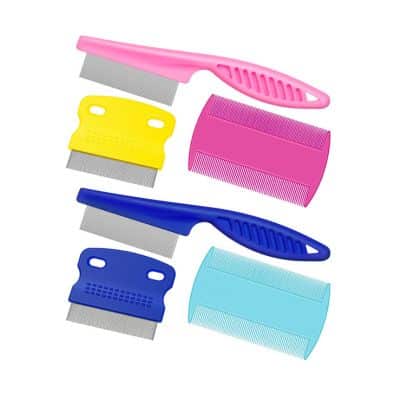
If your dog is infested with lice, shaving your dog is an excellent way to remove lice and eggs. For a mild case, you can use a special flea comb. This fine-tooth comb will remove the attached lice and eggs from your dog’s hair. Because you can’t kill the eggs with insecticides, the flea comb is the best way to remove them. You must use the flea comb regularly for a month or more to ensure complete lice eradication.
3. Clean Your Home
It’s crucial to clean bedding and any areas where your dog hangs out. Machine wash as much as you can and wipe down other areas thoroughly. This cleaning will prevent lice from living off of your dog and being able to reattach.
How Can Dog Lice Be Prevented?
Owners cannot guarantee their pets will not be exposed to lice, but there are some preventative measures to take.
- Monthly antiparasitic flea and tick prevention
- Clean grooming tools after each use
- Regular cleaning and disinfection of bedding
- Prevent contact with lice-infested pets or animals
- Proper diet and health care to keep dogs in good health
- Sanitary living conditions to prevent lice
Does Your Dog Have Lice?
In this 4-minute video from veterinarian Dr. Jones, he talks about how you can tell if your dog has lice.
Other Skin Irritants
Dog lice can be an uncomfortable and challenging experience for you and your dog. Knowing what to look for and how to deal with it will help you catch it early and treat your dog.
Dog lice are not the only thing that can irritate your dog’s skin. Read our articles on common dog skin allergies and typical dog skin conditions so you can learn how to recognize the symptoms and treat your dog quickly and safely. Owners may need to discuss a special dog food for allergies with their vet.
Tagged With: Skin

